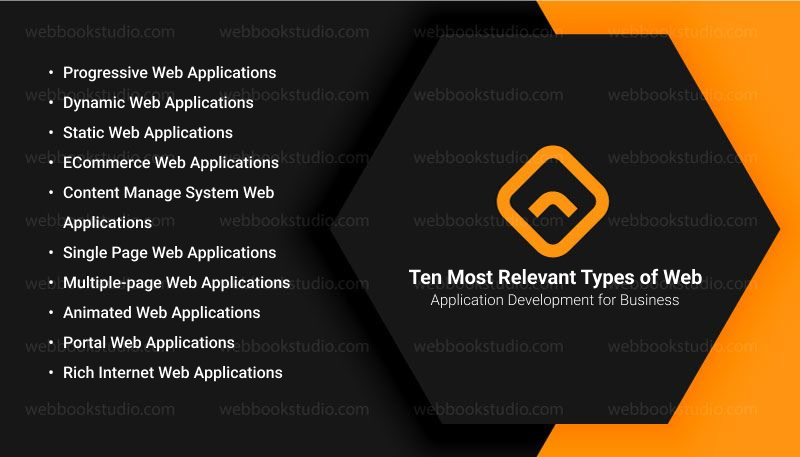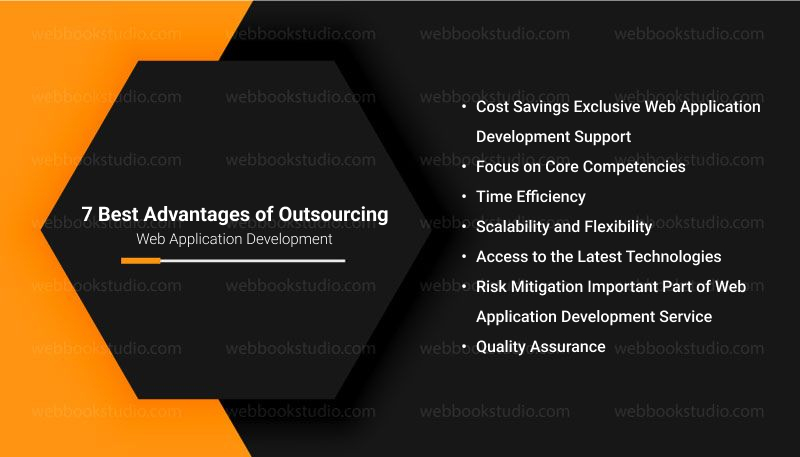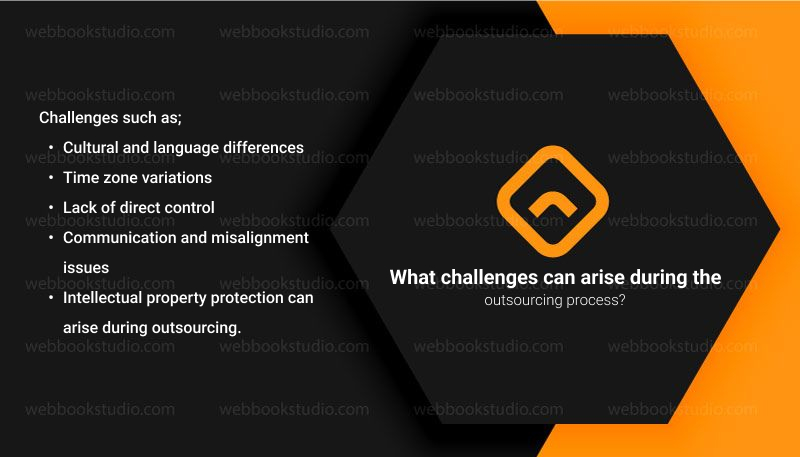Web Application Development Maximizing ROI: How outsourced Web App Dev can save companies money? Online application refers to creating software apps that run online browsers or are accessed over the internet.
These applications enable enterprises to perform various functions like e-commerce transactions, customer relationships, and project management. The advantages of web applications for businesses include increased efficiency, improved customer engagement, and enhanced data security.
In the world of Google searching, outsourcing spending is expected to grow to $731 billion by 2023. IT outsourcing expenditures could rise 22% over 2019 and reach $519 billion by 2023. Global outsourcing for business processes may rise by 19% over the 2019 figures to reach $212 billion by 2023.
Our Expertise support for your organizations increasingly recognizes the significance of online application development, many are turning to outsourcing as a strategic solution. Outsourcing website app developer offers numerous advantages, ranging from cost savings to access to specialized expertise.
This article will explore the benefits of outsourcing web application development for enterprises and provide insights on choosing the right outsourcing partner.
What Is Web Application Development (WPD)?
As technology continues to advance, web applications have become an integral part of our daily lives. From social media platforms to online shopping websites, the internet has revolutionized the way we communicate and conduct business. Custom website development is a rapidly growing field that allows developers to create dynamic and interactive web-based software programs that can be accessed from any device with an internet connection.
Let’s be clear. Web-based applications, also known as web-based apps, are just programs designed to be run on a web server. That means they can be accessed via the Internet or any other device that is connected to the Internet. For instance, Google Docs – a web-based application that allows users to edit and publish documents, is hosted on a web server. It is running “in the cloud.” Put, web app creation is developing the web-based version of an application.
Smart Choice for Building Web Application Development Fundamental Steps
In general, a web-based development process involves many fundamental steps that range from creativity, the discovery of a project, the user’s interface (UI) user experience (UX) design development, coding, and testing through installation and maintenance. The front-end development process of web applications is typically developed using a programming language or various languages such as;
- HTML
- CSS
- JavaScript, and others.
And are supported by the majority of web browsers. For back-end development, web-based applications are developed by using scripting on servers like;
as well as popular frameworks such as;
Most mobile apps are developed for a specific operating system, including Android or iOS. However, web apps are built to be cross-platform. They can be used on every device regardless of the operating system if a web browser is installed. Therefore, a web-based application is not required to download.
They gained prominence with the introduction of SaaS (Software as a Service) web applications are developed to act as the foundation of various web-based services, like;
- Enterprise Resource project management (ERP)
- Customer relationship management (CRM)
- Content management platforms (CMSs)
- eCommerce platforms.
Relevant Article; E-commerce website development company: how to choose?
Ten Most Relevant Types of Web Application Development for Business
Breaking down the benefits of enterprise web app outsourcing, There are a variety of web-based applications that companies can choose to build. Each of them has different functions and differs in their development cycles.

1. Progressive Web Applications
A progressive web-based application (PWA) is an app on the web that blends the most beneficial of both worlds – native mobile apps and web-based apps for instance
PWAs can be downloaded on your device and function as a native mobile application with features like offline operation, push notification background sync, and more. That makes it much easier to load even without a steady internet connection. PWAs are designed to be fast and have high efficiency offering a superior user experience than standard web-based applications.
2. Dynamic Web Applications
It is a very complex web-based application. Dynamic web applications include programs that allow people to use information, update and modify their data in real time and store data in databases, and process input data in a way that is appropriate without the need for code modifications or upgrades. They are optimized for speed and efficiency and provide a more enjoyable user experience than conventional web applications. For instance;
These web applications require more effort to develop because they rely on a database-driven structure and constant updates to accommodate users’ input. They use a mix of client-side scripting and server-side programming, databases such as MySQL, and third-party APIs to create dynamically user-generated content and data. Furthermore, dynamic apps must protect against attacks such as;
3. Static Web Applications
They are among the most basic web-based applications. In contrast to dynamic apps, static web apps don’t alter the content in response to user input. They’re merely a combination composed of HTML, CSS, and JavaScript to present information and content without the need for processing by server-side applications or databases.
For example, a company’s homepage could be a static application. These applications are simpler to build, maintain, and deploy than dynamic web apps. However, they could be more user-friendly and can create specific content for each user.
There’s a blend of dynamic and static web apps, also known as hybrid applications. However, these apps offer the best of both worlds with speed and performance from static web applications and the interactivity of dynamic apps.
4. eCommerce Web Applications
Is it hard to make an e-commerce website? Following the title, eCommerce Web applications are online shops and shopping websites;
Users can buy products or services via the web browser. This kind of web application is built with an intuitive interface for users (UI) made up of the most popular web-based app programming languages and numerous functions like;
- Shopping carts
- Produced search payment gateway integration
- Tracking orders
- Managing customers, and more.
Companies should also develop robust eCommerce applications that are secure against cyber-attacks to ensure a secure online shopping experience.
Helpful Article; Build an e-commerce website. How much does it cost to build?
5. Content Manage System Web Applications
CMS or Content Management System web-based apps are specifically designed to publish, create, edit, manage, and publish various types of content (images, text, gifs, text, and video) online.
Web-based applications allow companies or content creators to develop and maintain a website for their company without any prior knowledge of coding.
CMS applications allow organizing, editing, deleting, and managing websites within an online platform and modifying content via an administrator panel, easily depending on the user’s needs. Basically, frequently utilized to create blogs, streaming media websites, and other web-based development projects. The most popular CMSs employed include;
Using the plugins and modules available on these platforms, users can easily modify their websites to include features like;
- Contact forms
- eCommerce stores
- SEO features, etc.
Most relevant Article about Affordable WordPress website designers. Where can you find it?
6. Single Page Web Applications
As simple as it sounds, a single-page website application (SPA) is a system that has all data loaded and processed on a single page. Consider Google Maps and Gmail as two examples of SPAs. The significant benefit of single-page web applications is that they offer the opportunity for a simpler development process, a more efficient user experience, and smoother navigation for users.
For small-scale projects, web-based applications can develop and deployed swiftly without requiring complex back-end development. In addition, it helps reduce the load on web servers since it loads the contents on the same page. Also can get ideas about a Landing page for your business: how to create it?
7. Multiple-page Web Applications
In its simplest form, a multi-page web application (MPA) is a software application with more than one separate web page. Hyperlinks typically link it. Users interact via it by moving the pages from one to another, sometimes in the form of an online form. MPAs make connecting with websites and applications easy for customers through their browser interface.
In most cases, these web-based apps provide enhanced functionality over single-page web-based experiences because they offer higher layers of processing data, automation, and customized content. Contrary to SPAs, multi-page web applications require a lot of time and effort due to the many components of the software that must link.
Therefore, this kind of application needs a solid software development process and an architectural configuration, as every page must be designed with all features running in the background. But they are also more secure and extensible than SPAs.
8. Animated Web Applications
Go through Google’s Your Plan, Your Planet for an incredible example of a web-based animated application. Animation-based web applications create to mix traditional website content with animation to present it visually and provide a more engaging user experience. Instead of static websites and content, users can have a positive and new experience. Animation lets developers break away from conventional UI patterns and create an action that draws viewers’ attention, highlights factors, or makes a particular product or service stand out.
9. Portal Web Applications
A portal web application acts as a gateway to provide access to various web-based services, data resources, or other content. Portal web applications made typically employed for blogs, search engines, online stores, Etc.
That allows users to explore relevant resources as well as data that is relevant to their interests. These apps are perfect for companies to develop and personalize the interfaces to fit the intended users’ needs. Portal web applications can integrate with other tools like;
- AI-powered APIs
- search engines
- data analytics Etc.
It is a highly effective tool for businesses that want to build an effective online presence.
10. Rich Internet Web Applications
Rich internet web applications (RIWAs) are fascinating software designed to offer a richer and more exciting user experience by introducing numerous interactive elements that allow for greater interaction, including animations, drag-and-drop functionality, voice commands, and more. In contrast to traditional web applications, they use an amalgamation of web technologies, such as;
- HTML
- JavaScript
- AJAX
To produce an interface that mimics the appearance and feel of desktop applications. As the technology behind RIWAs develops, this type of application becomes easier for developers of websites to incorporate into their websites. With RIWAs, developers can develop data-driven apps that allow people to engage with information in near real-time. That allows them to connect to documents via remote access, easily search databases, and even video call with people worldwide.
In addition, RIWAs offer a better user experience, with fast-loading images and a variety of immersive animations that make playing and working on the Internet more enjoyable.
Most Searching Article about; Best web development services in the USA: how to get?
7 Best Advantages of Outsourcing Web Application Development
Web Applications have become indispensable for enterprises seeking to establish a strong online presence, streamline business processes, and deliver exceptional user experiences.

1. Cost Savings Exclusive Web Application Development Support
Outsourcing online application development can lead to significant cost savings for enterprises. By opting for outsourcing, businesses can reduce operational costs associated with hiring and maintaining an in-house development team.
Outsourcing eliminates the need for infrastructure expenses, such as office space and equipment, as the development tasks perform remotely. Additionally, outsourcing allows enterprises to access skilled professionals from around the world at competitive rates, further optimizing cost efficiency.
2. Focus on Core Competencies
Outsourcing online app development allows enterprises to focus on their core competencies. By delegating development tasks to external experts, businesses can enhance productivity and concentrate their resources on essential business activities. This streamlined approach enables enterprises to leverage specialized expertise, ensuring the development of high-quality web applications that align with their business objectives.
3. Time Efficiency
One of the significant advantages of outsourcing WPD is the time efficiency it offers. Outsourcing companies typically have experienced development teams and established processes in place, resulting in faster development and deployment timelines. With accelerated time-to-market, enterprises can gain a competitive edge and seize opportunities promptly. Additionally, outsourcing providers often offer robust project management capabilities, ensuring efficient coordination and timely delivery of web applications.
4. Scalability and Flexibility
Outsourcing WPD provides enterprises with scalability and flexibility. As businesses grow and their requirements evolve, they may need to scale their development resources up or down. Outsourcing partners can easily accommodate these changes, providing the necessary talent and resources on demand. Furthermore, outsourcing enables enterprises to adapt swiftly to changing market dynamics and technological advancements. Integrating web applications with existing systems becomes seamless, ensuring a cohesive and agile IT infrastructure.
5. Access to the Latest Technologies
Staying up-to-date with the latest technologies is crucial for enterprises seeking to remain competitive in the digital landscape. Outsourcing web application development offers access to experts well-versed in cutting-edge technologies and industry best practices. These professionals bring in-depth knowledge and experience, ensuring that the WPD incorporates the latest features, functionalities, and security measures. By harnessing the power of innovative technologies, enterprises can provide superior user experiences and gain a technological advantage.
6. Risk Mitigation Important Part of Web Application Development Service
Outsourcing WPD can help enterprises mitigate risks. Partnering with a reputable outsourcing provider, businesses can minimize financial risks associated with upfront investments in infrastructure, hiring, and training. Additionally, outsourcing companies prioritize data security and implement robust measures to protect sensitive information. Compliance with industry standards and regulations is paramount, reducing legal and reputational risks for enterprises.
7. Quality Assurance
OWPD ensures thorough quality assurance throughout the development process. Reliable outsourcing providers have established testing methodologies and procedures to identify and rectify issues or bugs. By conducting rigorous testing, enterprises can be confident in delivering high-quality web applications that meet their specifications. Moreover, outsourcing partners often provide ongoing support and maintenance services, ensuring that the web applications remain functional and secure in the long run.
Get a Helpful Article About Web app development companies: which is the best?
Conclusion about the Maximize your Enterprise’s Potential by Outsourcing
All Outsourcing online app developed brings numerous advantages to enterprises. It enables cost savings, allows businesses to focus on core competencies, enhances time efficiency, provides scalability and flexibility, grants access to the latest technologies, mitigates risks, and ensures quality assurance.
By selecting the right outsourcing partner and overcoming common challenges, enterprises can harness the power of outsourcing to develop robust web applications that drive their digital success.
If you’re considering beginning with a brand, an innovative product, or a piece of Enterprise Software, contact Webbook Studio today to schedule a free consultation!
Discover the Surprising Benefits of Web App Development Enterprises supported FAQs:
1. What are the Advantages of Outsourcing WPD?
Outsourcing online apps developed offers cost savings, allows businesses to focus on core competencies, and provides time efficiency, scalability, flexibility, access to the latest technologies, risk mitigation, and quality assurance.
2. What challenges can arise during the outsourcing process?

Challenges such as;
- Cultural and language differences
- Time zone variations
- Lack of direct control
- Communication and misalignment issues
- Intellectual property protection can arise during outsourcing.
3. What proportion of software developers works remotely?
The report reveals that more than 40 % of software engineers prefer only remote jobs. If their employers required them to return to work, 21% said they’d leave immediately. In contrast, 49% indicated they’d begin seeking a new job.
4. How can outsourcing Web Application Development save costs?
Outsourcing reduces operational costs, eliminates infrastructure expenses, and provides access to skilled professionals at competitive rates.
5. How to choose the right outsourcing partner for Web Application Development?
Choose an outsourcing partner based on their experience, expertise, client reviews, communication and collaboration capabilities, project management skills, data security measures, and cost and pricing models.

